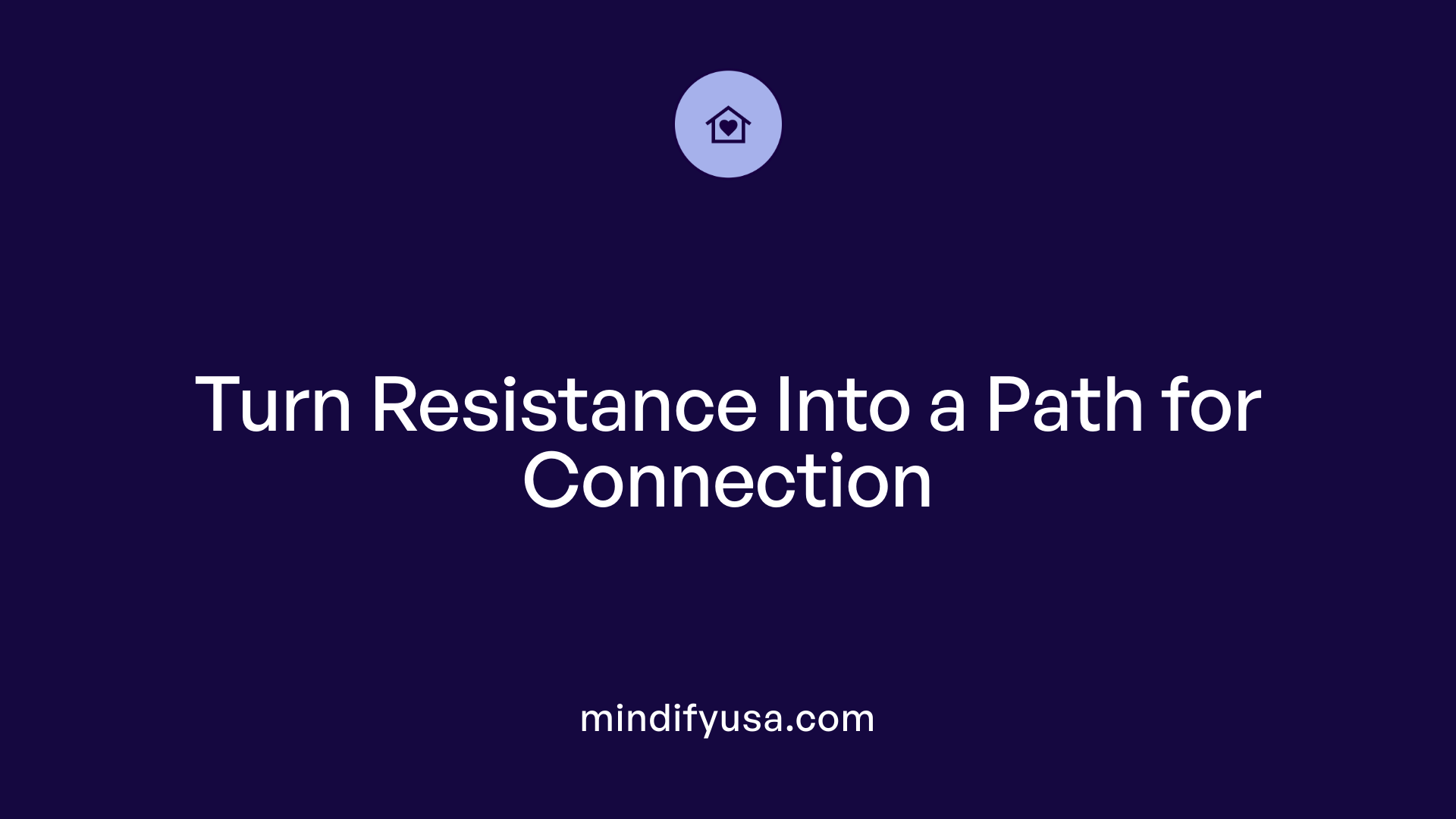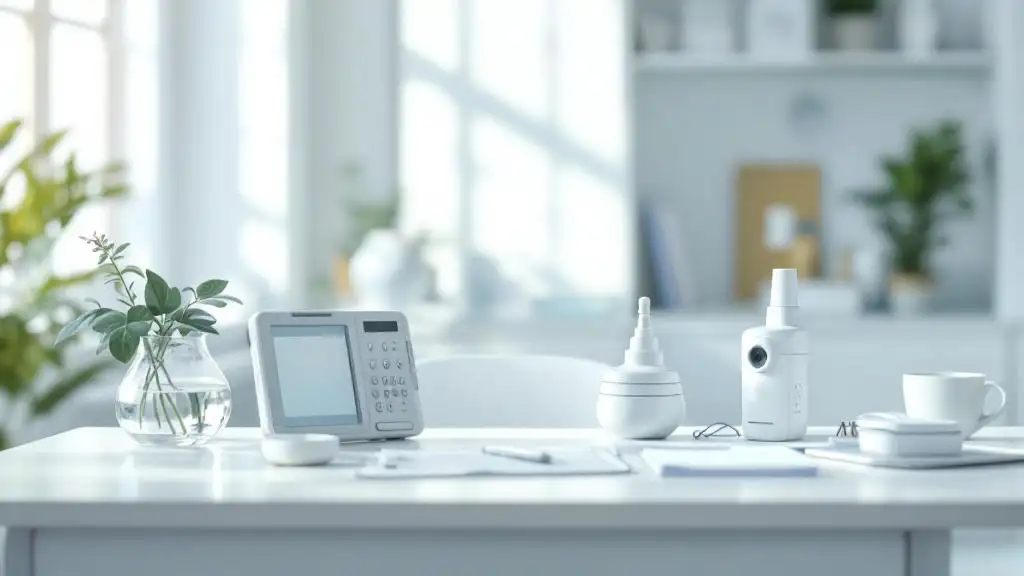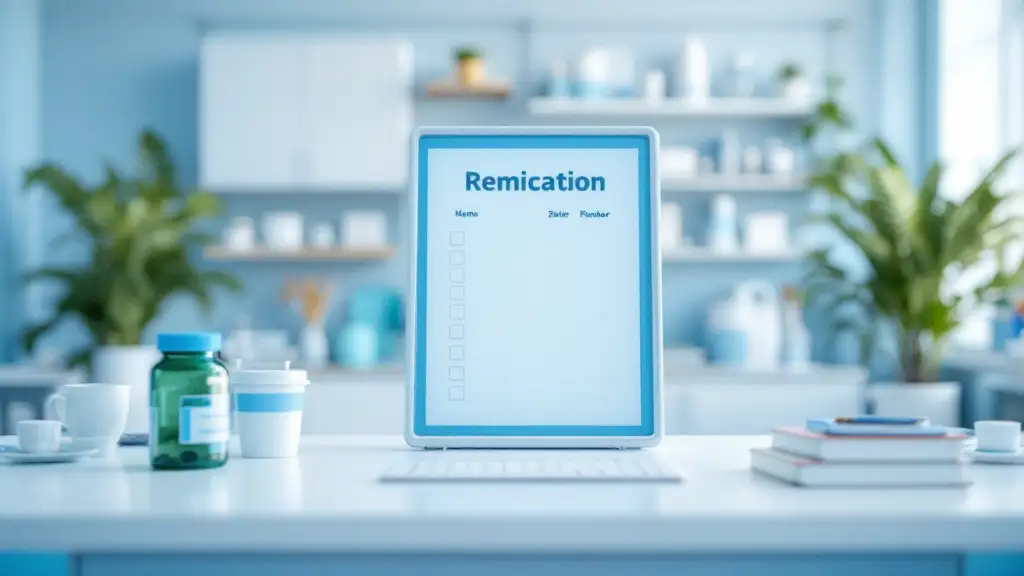Understanding How to Encourage Genuine Communication with Adolescents in Therapeutic Settings
Engaging teens effectively in therapy can be challenging, especially when resistance or hesitance arises. This article explores expert-backed methods to help parents and therapists create a trusting environment, enabling teens to feel safe and willing to share their thoughts and feelings. By adopting tailored approaches that respect teens' unique developmental needs, we can foster deeper connections, improve communication, and support adolescents on their journey to emotional well-being.
Establishing a Trusting Foundation in Early Therapy Sessions
How can therapists build rapport with avoidantly attached teens?
Building rapport with teens who have avoidant attachment styles requires patience, subtlety, and strategic approaches. Focus on establishing a safe environment where trust can grow gradually. Starting sessions by emphasizing connection over formal paperwork or treatment plans helps teens feel less pressured. Engaging in activities like games, sports, or creative projects creates a relaxed atmosphere, making it easier for teens to open up.
What strategies can help encourage teens to open up during therapy?
Effective strategies include modeling honesty and transparency, using first-person plural language, and involving teens in setting goals. Asking fewer questions and instead making reflective statements fosters comfort, while being fully present demonstrates authentic engagement. Validating their feelings, normalizing behaviors, and leading with empathy help teens feel understood without feeling overwhelmed. Giving teens some control—such as deciding on activities or discussion topics—further promotes trust.
How important is initial meeting approach?
In early sessions, the priority should be on understanding the teen's perspective. Avoid pushing for disclosures or immediate problem-solving; instead, aim to build a compassionate connection. Address concerns about confidentiality openly and show respect for their pace. Creating a calm, nonjudgmental space and providing opportunities for teens to participate actively in decision-making encourage ongoing participation.
What role does modeling reciprocal relationships play?
Modeling honesty and expressing relevant personal experiences can serve as a secure base for teens. Asking questions in a meaningful way, sharing stories, and demonstrating authenticity foster a sense of safety and attachment security. Establishing this mutual trust sets the tone for deeper engagement and emotional sharing.
How do activities help in rapport building?
Including activities like shooting hoops, playing games, or even casual outings like getting ice cream can facilitate opening up. These activities act as non-threatening ways for teens to express themselves and reveal insight into their emotional states. Such interactions make therapy feel supportive rather than confrontational, increasing their willingness to participate.
What are some practical steps to enhance trust?
Creating a safe space is fundamental. Explaining the benefits of therapy, reassuring about confidentiality, and normalizing vulnerability are important. Additionally, involving teens in choosing their therapist or deciding when and how to engage empowers them, leading to increased motivation and comfort.
How does patience influence rapport development?
Building trust is a slow process. Allowing teens to progress at their own pace, celebrating small successes, and continuously demonstrating patience helps in reducing anxiety and resistance. Over time, this creates a stable foundation for effective therapy.
| Strategy | Examples | Benefits |
|---|---|---|
| Active engagement | Games, shared activities | Eases anxiety, fosters connection |
| Transparency | Explaining confidentiality, therapy goals | Builds trust and helps set realistic expectations |
| Control and choice | Letting teens choose activities or topics | Promotes autonomy and cooperation |
| Validation and normalization | Validating feelings, normalizing behaviors | Creates a safe space for emotional expression |
| Patience and gradual connection | Slow pace, celebrating small steps | Reduces resistance, increases willingness to open up |
Deep listening, meaning-based questions, and involving teens in goal setting are additional techniques that foster engagement. Ultimately, a combination of gentle persistence, empathetic understanding, and creative activities can establish a solid, trusting relationship essential for effective therapy with avoidantly attached adolescents.
Building Secure Attachments Through Authentic Interactions

What methods help build trust and improve communication between teens and therapists?
Establishing a strong, trusting bond with avoidantly attached teenagers requires thoughtful approaches that focus on authenticity and subtlety. Creating a safe space where teens feel respected without pressure is fundamental. Therapists often prioritize building rapport first, emphasizing understanding the teen's perspectives and motivators over immediate paperwork or treatment plans.
One effective method is modeling reciprocal relationships. This involves the therapist being honest, sharing relevant personal stories, and answering questions openly. Such transparency helps teens see the therapist as a trustworthy figure, encouraging them to reciprocate and open up.
Active listening plays a crucial role. Therapists focus on being fully present, observing both verbal and non-verbal cues. Validating feelings and normalizing behaviors create a sense of connection, making teens more comfortable sharing their thoughts and feelings.
Using open-ended questions encourages teens to express themselves more freely. At the same time, reflective statements and engaging in activities like games or sports help foster a relaxed atmosphere conducive to trust.
Consistency, transparency, and demonstrating genuine care are central to strengthening the therapeutic relationship. These approaches help reduce suspicion and resistance, paving the way for more effective therapy.
How to calibrate responses to avoid overwhelming avoidant teens?
Avoidantly attached teens are often cautious about empathy, which means overly intense or obvious expressions of understanding can be counterproductive. Therapists carefully calibrate their responses by using subtle, calibrated approaches. This means balancing empathy with respect for the teen’s pacing, avoiding overwhelming them with too much emotional focus too quickly.
Therapists might use techniques such as asking fewer questions, making thoughtful reflections, and engaging in shared activities. By doing so, they create a sense of safety and stability.
Building trust gradually and allowing teens to set the pace helps them feel more comfortable. When teens see that they are in control and that their boundaries are respected, they are more likely to engage meaningfully.
Overall, understanding that some resistance may be an attempt at connection rather than rejection helps the therapist respond with patience and empathy, fostering a secure base for the teen’s growth.
Addressing Resistance with Empathy and Patience

How can therapists address teen resistance effectively?
Dealing with resistance from avoidantly attached teens requires patience, understanding, and strategic approaches. Recognizing that some resistance may actually be a form of connection or a protective mechanism is essential. Instead of viewing resistance as oppositional behavior, therapists can see it as an opportunity to build trust.
Building a genuine therapeutic relationship is vital. Therapists should focus on establishing trustworthiness through authenticity, consistency, validation, and presence. Creating a space where teens feel safe, accepted, and understood fosters openness and reduces defensiveness.
Motivational techniques like Motivational Interviewing and attachment-informed strategies are effective. These approaches validate the teen’s feelings, explore ambivalence, and support their sense of self-efficacy. For example, instead of pressuring a teen to talk, therapists can acknowledge their hesitation and gently guide them toward discovering their own motivation for change.
Understanding each teen's resistance style helps. Some teens may be more externalizing, requiring different engagement methods. Others might be silent or disengaged, benefitting from reflective listening, open-ended questions, or providing choices to foster a sense of control.
Normalizing therapy as a skill-building process rather than a cure can lessen stigma and resistance. Emphasizing that therapy is a safe space to develop coping strategies, learn about oneself, and practice new behaviors encourages teens to see it as a beneficial tool rather than an obligation.
Consistency and persistence are important. Continually demonstrating patience, actively listening, and validating feelings—even if progress seems slow—can gradually lower resistance. Involving family, school staff, or other support systems can also reinforce motivation and bolster engagement.
By applying these approaches, therapists can transform resistance into an initial step toward connection. Over time, this builds a stronger alliance, making teens more willing to participate actively in their own growth and healing.
Supporting Teens Through Creative Engagement and Goal Setting

How can therapists support teens in feeling comfortable and willing to share during sessions?
Creating a safe, welcoming space is essential for teens to feel comfortable in therapy. Therapists often use engaging activities like art, storytelling, or games to make sessions more inviting and less intimidating. These creative approaches allow teens to express themselves in ways that don’t feel pressured or confrontational.
Building trust also involves addressing individual concerns, such as confidentiality and session logistics, which reassures teens about their privacy and the process. When teens feel their opinions matter, and they have a say in what topics are covered, they tend to open up more.
Involving teens in treatment planning, using humor, and finding common interests help foster a sense of ownership. This approach diminishes stigma and helps teens see therapy as a supportive, collaborative journey rather than an intimidating obligation.
A framing of therapy as a coaching process focused on their personal goals can boost motivation. By emphasizing support, guidance, and personal growth, teens may become more willing to share and participate actively.
How can goal setting and involvement in therapy increase teen engagement?
Setting goals collaboratively is a powerful way to enhance teen engagement. When teens participate in defining their therapy targets, they gain a sense of control and purpose. Creating both long-term visions through visualization exercises and short-term goals using the SMART framework helps make progress visible and attainable.
Celebrating small achievements along the way encourages continued effort and reinforces that their work in therapy leads to real changes. This recognition fosters motivation and helps teens articulate what they want to achieve.
Involving teens in choosing treatment methods and goals aligns therapy with their interests, making it more relevant and meaningful. This active participation boosts their commitment and openness in sessions.
By combining creative activities like sports, art, or storytelling with goal-oriented discussions, therapists can create a dynamic environment that promotes trust, motivation, and honest sharing, ultimately improving therapeutic outcomes.
Creating a Supportive Environment for Self-Expression
 In therapy with avoidantly attached teens, fostering an environment that promotes open self-expression is vital. One effective way is through validation and normalization of their experiences. When teens feel their feelings are accepted and their behaviors understood as common responses to their circumstances, they are more comfortable sharing and exploring their thoughts.
In therapy with avoidantly attached teens, fostering an environment that promotes open self-expression is vital. One effective way is through validation and normalization of their experiences. When teens feel their feelings are accepted and their behaviors understood as common responses to their circumstances, they are more comfortable sharing and exploring their thoughts.
Using artistic and playful methods can be especially beneficial. Activities like drawing, storytelling, or engaging in games create a relaxed atmosphere that encourages teens to express themselves creatively and authentically. These approaches reduce pressure, making it easier for teens to open up at their own pace.
Creating a space where teens feel safe to voice their feelings without judgment helps build trust and encourages honest communication. For instance, normalizing their hesitations or discomfort can reassure them that their reactions are understandable, reinforcing their sense of safety.
Incorporating creative activities and playful techniques also contributes to strengthening their self-identity and self-esteem. As teens experiment with different modes of expression, they gain confidence in articulating their inner experiences.
Overall, a supportive, validating environment that includes artistic and playful methods empowers teens to explore their feelings, develop resilience, and foster healthier relationships. This foundation not only facilitates deeper self-awareness but also promotes ongoing engagement and growth within therapy.
The Role of Parent Support in Enhancing Engagement
What guidance can be provided to parents to help facilitate their teen’s engagement in mental health treatment?
Parents play a crucial role in supporting their teen's mental health journey. To encourage active participation, parents should foster open, honest conversations and create a safe environment where teens feel comfortable expressing their thoughts and feelings.
Recognizing warning signs such as changes in sleep, eating habits, hygiene, withdrawal from social activities, or risky behaviors can help parents understand when their teen might need professional help. Addressing any stigma related to mental health and emphasizing that seeking support is a sign of strength can motivate teens to engage in treatment willingly.
Praising teens for their efforts and willingness to attend therapy reinforces positive behaviors and builds motivation. Demonstrating support through consistent involvement, such as attending appointments with the teen or following through on therapeutic strategies at home, underscores reliability.
Involving the entire family in the process through approaches like family or attachment-based therapy can strengthen relationships, foster trust, and make the teen feel supported. Respecting the teen’s desire for confidentiality and giving them space to communicate directly with their therapist can also empower the teen.
Ultimately, parents' active encouragement, understanding, and respectful involvement create an environment conducive to successful therapy, helping teens feel secure and motivated to work on their mental health.
Guidance for Parents and Caregivers to Help Teens Advocate for Themselves
What approaches can parents use to assist their teens in seeking and participating in therapy?
Supporting teens in therapy involves a thoughtful approach that emphasizes understanding, patience, and respect for their autonomy. Parents can begin by normalizing mental health treatment, helping teens see therapy as a positive, supportive resource rather than a sign of weakness or failure. Emphasizing the strengths and potential benefits of therapy can reduce stigma and foster motivation.
Effective strategies include active listening to the teen’s concerns, validating their feelings, and avoiding pressure. Using positive and strength-based language helps build trust. Parents should collaborate with their teens in selecting a therapist who respects their personality and approach, creating a sense of control and comfort.
It is also helpful to educate oneself about adolescent development and mental health to better understand the teen’s experience. Managing parents’ own anxieties and maintaining a nonjudgmental stance can create a supportive environment.
Involving the teen in therapy-related decisions—such as choosing the therapist or setting therapy goals—can boost their willingness to engage. During sessions, parents’ ongoing support and encouragement reinforce the importance of therapy, helping teens feel safe and motivated.
Ultimately, the goal is to foster a trusting, collaborative relationship where teens feel empowered to advocate for their mental health needs.
Fostering Trust and Engagement for Better Therapeutic Outcomes
Building a trusting, supportive environment is essential to help teens open up in therapy. Patience, authenticity, and creative approaches tailored to each adolescent’s needs can break down barriers, reduce resistance, and foster genuine self-expression. Engaged parents and skilled therapists working collaboratively can ensure that teens feel heard, respected, and motivated to participate actively in their mental health journey. By prioritizing a safe and affirming space, we empower teens to develop resilience, build self-awareness, and achieve lasting emotional well-being.
References
- Engaging avoidant teens
- Think Your Teen Should Try Therapy? 5 Easy Ways to Start ...
- Helping Resistant Teens Into Treatment
- 3 Basic Counseling Skills for Working With Teens
- What to Do When Your Teen Refuses to Talk to a Therapist
- Strategies to Help Your Teenager Embrace Counseling
- Engaging avoidant teens
- Think Your Teen Should Try Therapy? 5 Easy Ways to Start ...
- What to Do When Your Teen Refuses to Talk to a Therapist





































































































